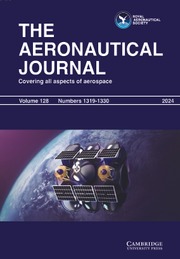Jet Propulsion
A Simple Guide to the Aerodynamics and Thermodynamic Design and Performance of Jet Engines
3rd Edition
£49.99
- Authors:
- Nicholas Cumpsty, Imperial College London
- Andrew Heyes, University of Strathclyde
- Date Published: July 2015
- availability: Available
- format: Paperback
- isbn: 9781107511224
£
49.99
Paperback
-
Now in its third edition, Jet Propulsion offers a self-contained introduction to the aerodynamic and thermodynamic design of modern civil and military jet engine design. Through two-engine design projects for a large passenger and a new fighter aircraft, the text explains modern engine design. Individual sections cover aircraft requirements, aerodynamics, principles of gas turbines and jet engines, elementary compressible fluid mechanics, bypass ratio selection, scaling and dimensional analysis, turbine and compressor design and characteristics, design optimization, and off-design performance. The civil aircraft, which formed the core of Part I in the previous editions, has now been in service for several years as the Airbus A380. Attention in the aircraft industry has now shifted to two-engine aircraft with a greater emphasis on reduction of fuel burn, so the model created for Part I in this edition is the new efficient aircraft, a twin aimed at high efficiency.
Read more- The emphasis is on simple, realistic, design examples of real jet engines, especially engines under development at present - these real examples of current applications of technology give readers additional insight
- Addresses the modern aircraft industry shift to two-engine aircraft with a greater emphasis on reduction of fuel burn; the model created for Part I is the new efficient aircraft, a twin aimed at high efficiency
- Contains a substantial number of exercises, which follow, as far as possible, logical steps in the design of the civil engine and the military combat engine
- Coverage in the third edition switches to using fan pressure ratio as the independent design variable rather than bypass ratio, thus making use of modern state-of-the-art design strategies and giving a much clearer insight into controlling effects
Reviews & endorsements
'This book provides an excellent overview of the thermodynamic analysis and performance of turbojet based engines for the aircraft industry. … The book includes an excellent set of example questions for each section which are given a relevant contemporary context. … This is an excellent resource for anyone wishing to use this as a textbook as part of an undergraduate aerospace engineering programme. The authors have used their extensive industrial links to develop a textbook that is not only useful to undergraduate students on any programme covering aero gas turbine engines but would find a suitable place on the desk of professionals working in the industry.' K. L. Smith, The Aeronautical Journal
Customer reviews
Not yet reviewed
Be the first to review
Review was not posted due to profanity
×Product details
- Edition: 3rd Edition
- Date Published: July 2015
- format: Paperback
- isbn: 9781107511224
- length: 365 pages
- dimensions: 255 x 177 x 20 mm
- weight: 0.71kg
- contains: 124 b/w illus. 29 tables 141 exercises
- availability: Available
Table of Contents
Part I. Design of Engines for a New 600-Seat Aircraft:
1. The new large aircraft – requirements and background
2. The aerodynamics of the aircraft
3. The creation of thrust in a jet engine
4. The gas turbine cycle
5. The principle and layout of jet engines
6. Elementary fluid mechanics of compressible gases
7. Selection of bypass ratio
8. Dynamic scaling and dimensional analysis
9. Turbomachinery: compressors and turbines
10. Overview of the civil engine design
Part II. Engine Component Characteristics and Engine Matching:
11. Component characteristics
12. Engine matching off-design
Part III. The Design of the Engines for a New Fighter Aircraft:
13. A new fighter aircraft
14. Lift, drag and the effects of manoeuvring
15. Engines for combat aircraft
16. Design point for a combat aircraft
17. Combat engines off-design
18. Turbomachinery for combat aircraft
Part IV. A Return to the Civil Engine:
19. A return to the civil transport engine
20. Conclusion.
Sorry, this resource is locked
Please register or sign in to request access. If you are having problems accessing these resources please email [email protected]
Register Sign in» Proceed
You are now leaving the Cambridge University Press website. Your eBook purchase and download will be completed by our partner www.ebooks.com. Please see the permission section of the www.ebooks.com catalogue page for details of the print & copy limits on our eBooks.
Continue ×Are you sure you want to delete your account?
This cannot be undone.
Thank you for your feedback which will help us improve our service.
If you requested a response, we will make sure to get back to you shortly.
×






